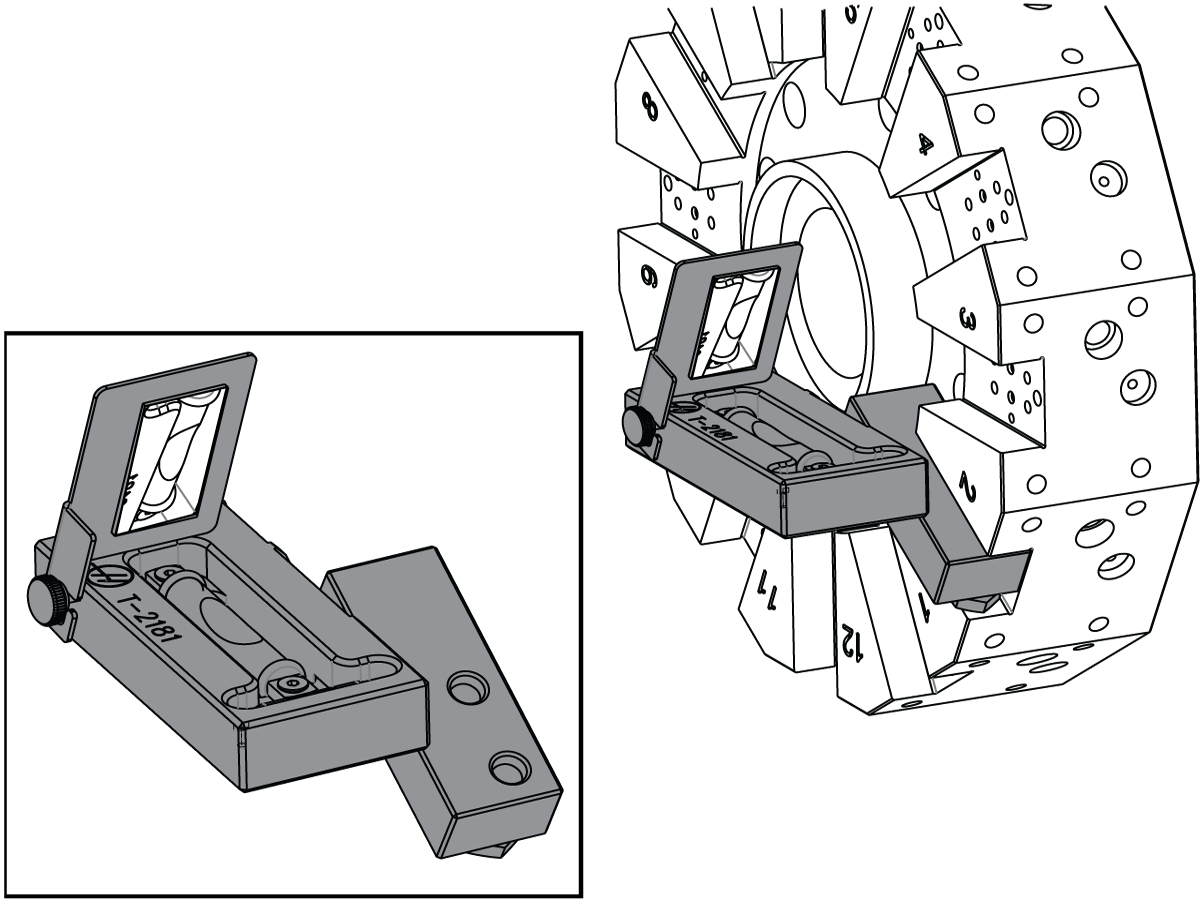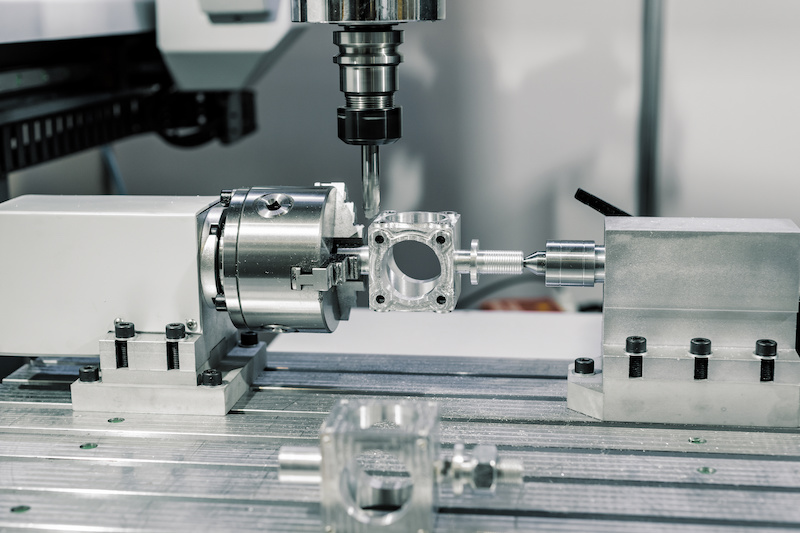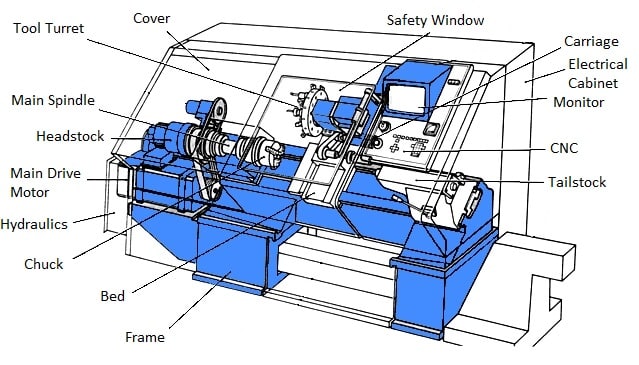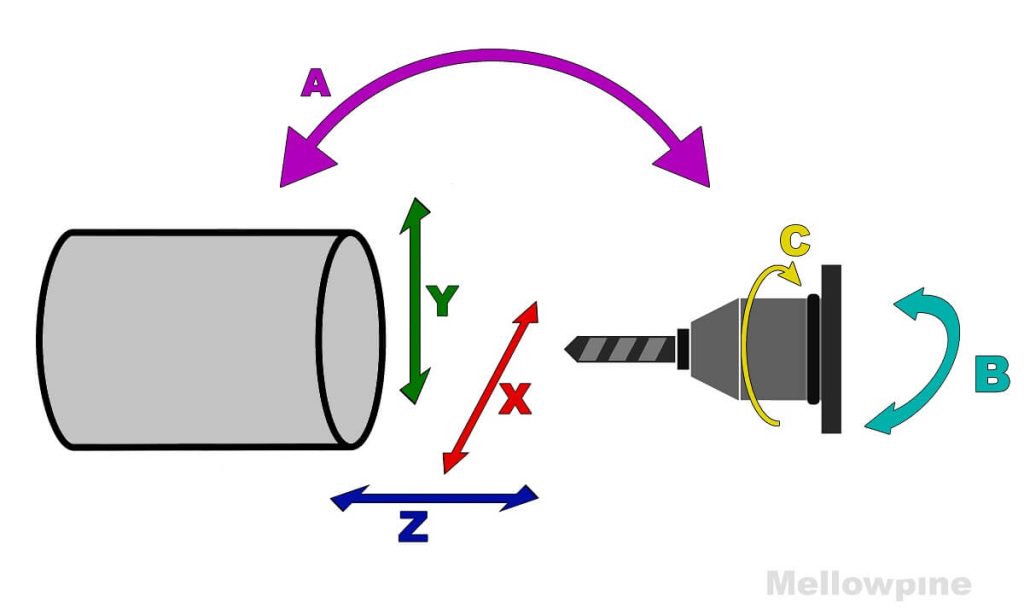Table of Contents
- How to Level a CNC Lathe?
- Step 1: Prepare the Machine
- Step 2: Check the Tailstock Alignment
- Step 3: Check the Headstock Alignment
- Step 4: Check the Tool Post Alignment
- Step 5: Check the Chuck Alignment
- Step 6: Verify the Alignment
- Step 7: Benefits of Leveling a CNC Lathe
- Step 8: Leveling Vs. Truing
- Step 9: Common Issues with an Unleveled CNC Lathe
- Step 10: Conclusion
- Frequently Asked Questions
- What is the importance of leveling a CNC lathe?
- How do you check the level of a CNC lathe machine?
- What are some common problems that can occur if a CNC lathe is not leveled properly?
- What are some tips for leveling a CNC lathe machine?
- Can you level a CNC lathe machine yourself or should you hire a professional?
If you’re a CNC lathe operator, you know that precision is key when it comes to producing high-quality parts. One of the most important steps you can take to ensure that your lathe is operating at peak performance is to make sure it’s properly leveled.
Leveling a CNC lathe might sound like a daunting task, but it’s actually a fairly straightforward process. With a few basic tools and some careful attention to detail, you can have your lathe running like a well-oiled machine in no time. So, let’s dive in and learn how to level a CNC lathe like a pro!
- Turn off the power and unplug the machine.
- Use a spirit level to check the machine’s levelness.
- Adjust the leveling feet until the machine is level in both directions.
- Check the levelness again and make any necessary adjustments.
- Once level, tighten the locking nuts on the leveling feet.
- Turn on the power and run some test cuts to ensure the machine is working properly.
How to Level a CNC Lathe?
Leveling a CNC lathe is an essential step in ensuring the accuracy of the machine’s operation. A lathe that is not properly leveled can cause uneven cuts, wasted material, and even damage to the machine. In this article, we will provide a step-by-step guide on how to level a CNC lathe to ensure its optimal performance.
Step 1: Prepare the Machine
Before starting the leveling process, make sure the machine is turned off and unplugged. Remove any debris or material from the lathe bed to provide a clear workspace. Ensure that all the feet of the lathe are in contact with the floor.
Once the machine is cleared and grounded, check the level of the lathe bed by using a spirit level. If the bed is not level, adjust the feet of the lathe by turning them clockwise or counterclockwise to achieve a level bed.
Step 2: Check the Tailstock Alignment
The tailstock of the lathe should also be aligned properly. To check the tailstock alignment, use a dial indicator to measure the distance between the tailstock and the lathe bed at different points.
If there are any variations in the readings, adjust the tailstock by loosening the bolts and shifting it until it is aligned with the lathe bed. Once the tailstock is aligned, tighten the bolts to secure it in place.
Step 3: Check the Headstock Alignment
The headstock is another critical component that needs to be aligned properly. To check the headstock alignment, use a dial indicator to measure the distance between the spindle and the lathe bed at different points.
If there are any variations in the readings, adjust the headstock by loosening the bolts and shifting it until it is aligned with the lathe bed. Once the headstock is aligned, tighten the bolts to secure it in place.
Step 4: Check the Tool Post Alignment
The tool post is another component that needs to be aligned properly. To check the tool post alignment, use a dial indicator to measure the distance between the tool post and the lathe bed at different points.
If there are any variations in the readings, adjust the tool post by loosening the bolts and shifting it until it is aligned with the lathe bed. Once the tool post is aligned, tighten the bolts to secure it in place.
Step 5: Check the Chuck Alignment
The chuck is a critical component that needs to be aligned properly. To check the chuck alignment, use a dial indicator to measure the runout of the chuck.
If there is any runout, adjust the chuck by tightening or loosening the jaws until the runout is within the acceptable tolerance. Once the chuck is aligned, tighten the jaws to secure the workpiece in place.
Step 6: Verify the Alignment
Once all the components are aligned, verify the alignment by checking the runout of the spindle. Use a dial indicator to measure the runout of the spindle at different points.
If the readings are within the acceptable tolerance, the lathe is now properly aligned and ready for operation.
Step 7: Benefits of Leveling a CNC Lathe
There are several benefits to leveling a CNC lathe, including improved accuracy, reduced material waste, and increased tool life. A properly leveled lathe ensures that cuts are even and consistent, resulting in higher-quality finished products.
Step 8: Leveling Vs. Truing
Leveling a CNC lathe is different from truing, which involves aligning the spindle and chuck with the tailstock. While both processes are essential for proper lathe operation, leveling ensures that the lathe bed is aligned with the floor, while truing ensures that the components are aligned with each other.
Step 9: Common Issues with an Unleveled CNC Lathe
An unleveled CNC lathe can cause several issues, including uneven cuts, wasted material, and even damage to the machine. Misaligned components can also cause premature wear and tear on the tooling and reduce the lifespan of the machine.
Step 10: Conclusion
In conclusion, leveling a CNC lathe is an essential step in ensuring its optimal performance. By following the steps outlined in this article, you can ensure that your lathe is properly aligned and ready for operation. Remember to check the alignment of all components, including the tailstock, headstock, tool post, and chuck, and verify the alignment by checking the runout of the spindle.
Frequently Asked Questions
CNC lathe machines are widely used in the manufacturing industry to produce high precision components. However, to ensure accurate results, it is important to level the CNC lathe properly. Here are some frequently asked questions about how to level a CNC lathe.
What is the importance of leveling a CNC lathe?
Leveling a CNC lathe is crucial for obtaining accurate results. If the machine is not leveled properly, it can lead to inaccuracies in the machining process, resulting in poor quality parts. Moreover, it can cause wear and tear on the machine, reducing its lifespan. Therefore, it is important to ensure that the machine is leveled properly before starting any machining operations.
To level a CNC lathe, you need to use precision leveling tools that can measure the machine’s level accurately. You can also use shims to adjust the level of the machine. It is recommended to check the level of the machine periodically to ensure that it is still level and adjust it if necessary.
How do you check the level of a CNC lathe machine?
To check the level of a CNC lathe machine, you need to use a precision level. First, you need to clean the surfaces where the level will be placed. Then, place the level on the bed of the lathe and check the bubble indicator. If the indicator is centered, the machine is level. If it is not centered, you need to adjust the level using shims or other leveling tools.
It is recommended to check the level of the machine in multiple positions to ensure that it is level throughout its entire range of motion. This will help to ensure that the machine will produce accurate results regardless of its orientation.
What are some common problems that can occur if a CNC lathe is not leveled properly?
If a CNC lathe is not leveled properly, it can lead to several problems. First, it can cause inaccuracies in the machining process, resulting in poor quality parts. Second, it can cause excessive wear and tear on the machine, reducing its lifespan. Third, it can cause the machine to vibrate excessively, leading to premature failure of the bearings and other components.
Therefore, it is important to ensure that the machine is leveled properly before starting any machining operations. This will help to ensure that the machine will produce accurate results and have a long lifespan.
What are some tips for leveling a CNC lathe machine?
When leveling a CNC lathe machine, it is important to follow some tips to ensure that the machine is leveled properly. First, make sure that the surfaces where the level will be placed are clean and free of debris. Second, use precision leveling tools to ensure accurate measurements. Third, check the level of the machine in multiple positions to ensure that it is level throughout its entire range of motion.
Fourth, use shims or other leveling tools to adjust the level of the machine. Fifth, check the level of the machine periodically to ensure that it is still level and adjust it if necessary. By following these tips, you can ensure that your CNC lathe machine is leveled properly and will produce accurate results.
Can you level a CNC lathe machine yourself or should you hire a professional?
Leveling a CNC lathe machine can be done by yourself if you have the necessary skills and tools. However, if you are not familiar with the process, it is recommended to hire a professional to do it for you. A professional will have the expertise and tools necessary to level the machine accurately and efficiently. Moreover, they can also identify any other problems that may be affecting the machine’s performance and recommend solutions.
If you decide to level the machine yourself, make sure that you follow the manufacturer’s instructions carefully and use the appropriate tools. If you encounter any problems or are unsure about the process, it is better to stop and seek help rather than risking damage to the machine.
In conclusion, leveling a CNC lathe requires a bit of time, patience, and attention to detail. However, the benefits far outweigh the effort. A properly leveled lathe will ensure accuracy in machining, reduce wear and tear on the machine, and increase the lifespan of the equipment.
Remember to always refer to the manufacturer’s instructions for leveling the lathe and use precision measuring tools for the most accurate results.
By taking the time to level your CNC lathe, you’ll be able to produce high-quality and precise parts, ultimately leading to increased productivity and profitability for your business. So, take the time to level your lathe properly and reap the rewards in the long run.
Request a quote today!
[contact-form-7 id="1578" title="Contact form"]
Please compress the file into a ZIP or RAR file before uploading. Alternatively, send through your RFQ by email.
enquires@unitymanufacture.com





